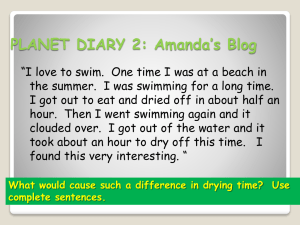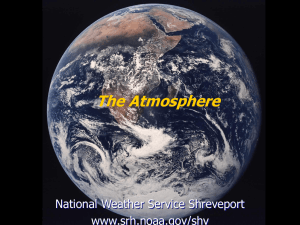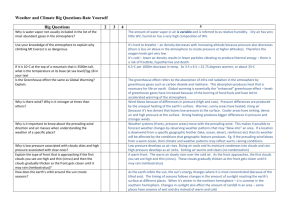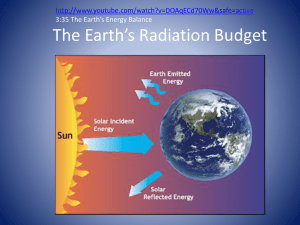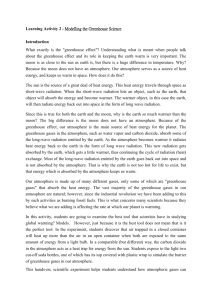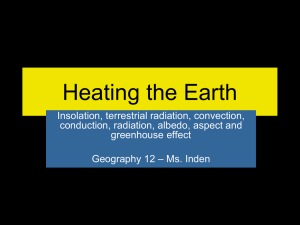Energy Transfer in the Atmosphere Review Worksheet
advertisement
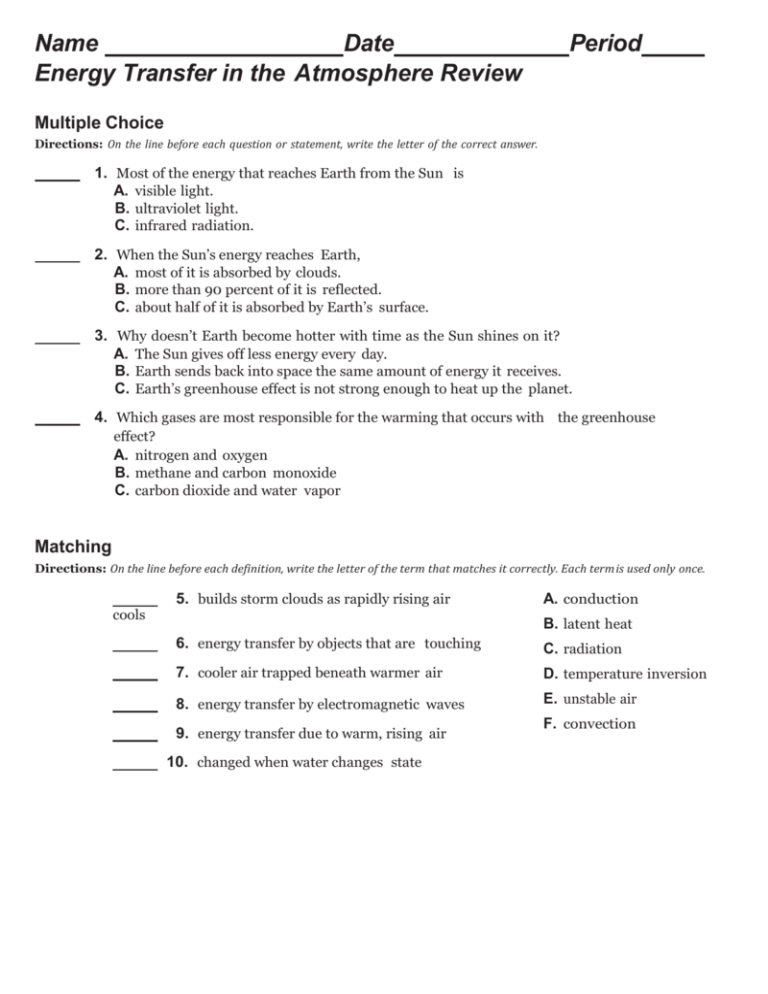
Name Date Energy Transfer in the Atmosphere Review Period Multiple Choice Directions: On the line before each question or statement, write the letter of the correct answer. 1. Most of the energy that reaches Earth from the Sun is A. visible light. B. ultraviolet light. C. infrared radiation. 2. When the Sun’s energy reaches Earth, A. most of it is absorbed by clouds. B. more than 90 percent of it is reflected. C. about half of it is absorbed by Earth’s surface. 3. Why doesn’t Earth become hotter with time as the Sun shines on it? A. The Sun gives off less energy every day. B. Earth sends back into space the same amount of energy it receives. C. Earth’s greenhouse effect is not strong enough to heat up the planet. 4. Which gases are most responsible for the warming that occurs with the greenhouse effect? A. nitrogen and oxygen B. methane and carbon monoxide C. carbon dioxide and water vapor Matching Directions: On the line before each definition, write the letter of the term that matches it correctly. Each term is used only once. 5. builds storm clouds as rapidly rising air cools A. conduction B. latent heat 6. energy transfer by objects that are touching C. radiation 7. cooler air trapped beneath warmer air D. temperature inversion 8. energy transfer by electromagnetic waves E. unstable air 9. energy transfer due to warm, rising air 10. changed when water changes state F. convection Name Date Period Energy Transfer in the Atmosphere Review Completion Directions: On each line, write the term that correctly completes each sentence. 1. Thermal energy from the Sun is transferred to Earth via . 2. A(n) occurs when stable, cool air traps warmer air under it. 3. In , cool sinking air near Earth’s surface replaces warm, rising air. 4. transfers thermal energy from within Earth to molecules near its surface. 5. Most of the solar energy that reaches Earth is and near- visible radiation. is exchanged when water changes from one phase 6. to the other. Short Answer Directions: Respond to each statement on the lines provided. 7. Contrast two ways that Earth and its atmosphere interact with energy from the Sun. 8. Explain why Earth does not overheat from constantly receiving solar energy. 9. Differentiate between stable and unstable air. Explain the effect of each on weather. 10. Recall how the greenhouse effect controls Earth’s temperature.


